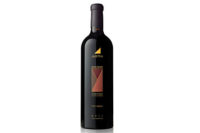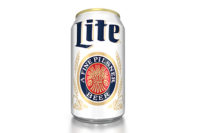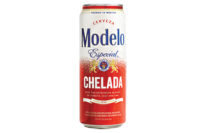When it comes to the overall alcohol market, manufacturers not only are analyzing their own brand sales but also the respective categories in which they compete. For the beer category, hard ciders are offering consumers an entry point into this multibillion dollar industry, experts note.
| Click here to go back to the 2014 Beer Category Report landing page. |
“If you take a myopic view of the industry, above-premium and everything that we categorize in that, they’re all bringing drinkers in one way or another,” says Jeff Nowicki, chief strategy officer for Bump Williams Consulting Co., Stratford, Conn. “When you really start to look at ciders, I would say six out of 10 drinkers [in] the cider segment are coming from outside of the beer category into the category.”
To that point, Andrea Riberi, senior vice president of alcohol beverages for New York-based Nielsen, adds that hard ciders are stealing consumers from the wine and spirits segments instead of other beer categories, so hard ciders’ presence hasn’t had a cannibalizing effect on overall beer category volumes. She adds that hard cider flavor offerings could appeal to spirits drinkers, while the drier varieties might have the same effect on white wine drinkers.
“The hope is cider will bring more wine and spirits drinkers back into the beer category,” she explains.
Riberi notes that hard cider has the opportunity to appeal to both men and women; however, Bump Williams’ Nowicki says that the segment gravitates more toward females from the millennial and Generation X age groups that are accustomed to juice offerings.
“They are now finding an alcoholic beverage offering that fits that somewhat same flavor profile,” he says.
Edward Hyseh, U.S. research analyst for Euromonitor International, Chicago, notes that the gluten-free trend also is drawing consumers to hard cider. “Whether or not you actually have Celiac disease, you’re gluten sensitive, you think you’re gluten sensitive, or you have no idea whether you are or not [but] you just think it’s a health trend, all cider is gluten free, whereas beer has gluten,” he says.
But no matter which consumers are drinking hard ciders, all analysts agree that these beverages are performing well.
“This is probably, aside from craft beer, one of the most exciting things that’s going on in the American alcoholic drinks market,” Hyseh says.
Although hard cider trails all other segments of the beer category, excluding non-alcohol and malt liquor, the segment had the largest growth with approximately 100 percent dollar sales growth and 101 percent case sales growth for the 52 weeks ending Dec. 29, 2013, in supermarkets, drug stores, mass merchandisers, gas and convenience stores, military commissaries, and select club and dollar retail chains, according to Chicago-based Information Resources Inc. (IRI).
More retailers are featuring hard cider products in their ads as well as offering promotional pricing, which has benefited the segment, Bump Williams’ Nowicki explains.
“Retailers are putting more and more in,” he says. “It is a very embryonic segment right now. I’d say the growth on cider is scratching the surface. I think you’re going to see these huge [70-90] percent growth trends continue for the next couple of years because it hasn’t even gained a full 1 percent segment share yet.”
Nielsen’s Riberi also anticipates that the segment will continue to grow, but that growth will come from brands already established in the market.
“I think that retailers aren’t going to continue to add hundreds of more cider offerings, but we do think there is still [an] upside for cider,” she says.
As more consumers experiment with ciders, brewers are developing products to appeal to their different taste profiles.
Riberi notes that a lot of fruits have been utilized for ciders like blueberry, pear, pumpkin and peach, but more could be on the way.
“I think we’ll see blackberries, apricots, rhubarb, elderberry, pomegranate — all different fruits,” she says. “As we see the flavor trends across beer, I think we’re also going to see it in cider.”
Angry Orchard, a brand of The Boston Beer Co., Boston, added a number of varieties to its lineup last year, including Elderflower, Cinnful Apple and Green Apple.
Brewers also pulled influence from indulgence trends. For example, Middlebury, Vt.-based Vermont Hard Cider Co., a division of C&C Group, recently released its Woodchuck Cellar Series Chocolate variety, a version of its original small-batch hard cider aged with crushed cacao beans. In addition to artisan chocolate notes, the hard cider also features a hint of caramel, the company says.
Large brewers also are participating in the segment. St. Louis-based Anheuser-Busch, a division of Anheuser-Busch InBev, released Stella Artois Cidre in 2013. The European-style hard cider features a drier, more savory flavor profile compared with sweeter, domestic ciders, the company says.
Euromonitor’s Hyseh notes that traditionally the U.S. market has been dominated by fairly sweet ciders, but it’s hit a point where consumers might be looking for less-sweet variants, which could be the next trend to expect from the segment.















